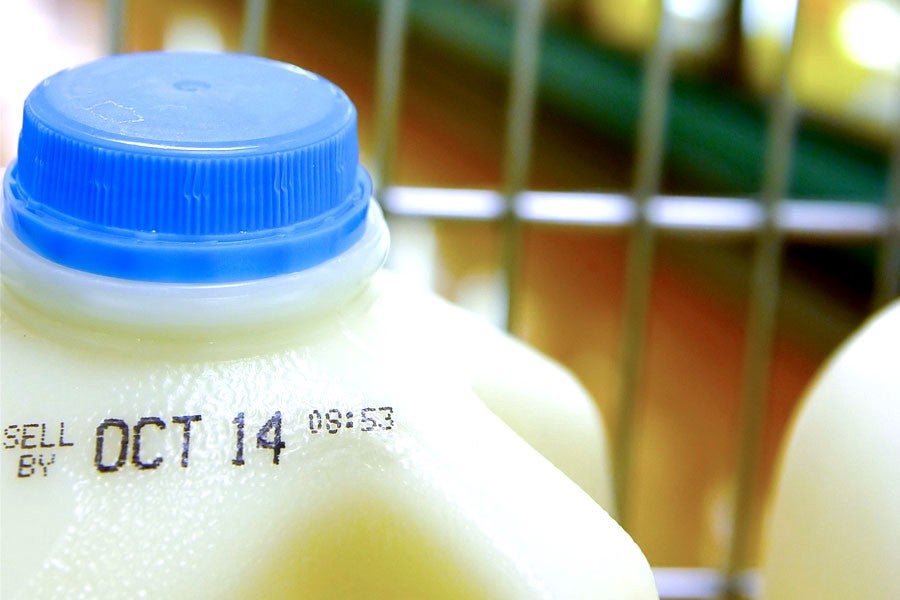Americans waste a fuckton of food: Roughly 50 percent of all produce in the U.S. is thrown away. That’s about 60 million tons (or $160 billion worth) of produce annually, according to a report published in The Guardian. Even more shocking, that amount constitutes roughly “one-third of all foodstuffs” in America. This problem expands beyond America, too: Approximately one-third of food produced for human consumption in the world is also lost or wasted.
So why are we throwing away so much food? One reason is that the majority of Americans have absolutely no clue what “sell by” labels are trying to tell them, which often encourages overcautious consumers to throw away perfectly good food.
To clear up any confusion, Dana Hunnes, senior dietitian at the Ronald Reagan UCLA Medical Center, helped us figure out the real meaning of “sell by” dates. “The ‘sell by’ date is aimed at retailers, and it informs them of the date the product should be sold or removed from the shelf,” Hunnes explains. “The sell-by date does not mean the product is unsafe to consume after that date.” In other words, the “sell by” date isn’t aimed at consumers at all — we simply pay attention to them, because manufacturers haven’t done a good job of clearly labeling our food.
The only reason manufacturers stick these labels on their food is actually to protect the reputation of their products — they want consumers to see and consume their food right as it reaches peak freshness and taste. According to the Institute of Food Technologists, in fact, one-third of a product’s shelf-life remains after the “sell by” date.
This, naturally, leaves us with the same basic question: How long is food safe to eat after passing its “sell by” date?
Dana Gunders, food scientist at the National Resource Defense Council and author of the Waste-Free Kitchen Handbook, previously recommended using your senses as a guide: “If it looks bad, tastes bad and smells bad, don’t eat it,” she explained. “However, if it looks fine, tastes fine and smells fine, you’re probably okay.”
Hunnes provides some more precise suggestions, but adds that hard-and-fast rules are tough to pinpoint when it comes to the freshness of food:
- Meat: One to three days beyond the “sell by” date
- Dairy: One week beyond the “sell by” date
- Eggs: One month beyond the “sell by” date
- Bread: One week (or two to three weeks in the fridge) beyond the “sell by” date
Canned foods and frozen foods last even longer, according to nutritionist David Friedman, author of Food Sanity: How to Eat in a World of Fads and Fiction: “Items from the freezer section of the supermarket are safe to eat indefinitely, although you may want to discard them if you see freezer burns,” he explains. “High-acid canned foods, like tomatoes and citrus fruits, will keep for up to two years past the ‘sell by’ date, and low-acid canned goods — vegetables, meat and fish — will last up to six years past the ‘sell by’ date.”
This handy website also has a massive database of food products and their shelf life.
At the end of the day, the only foods you should absolutely avoid eating past their “sell by” dates are deli meats, unpasteurized dairy products, ready-to-eat refrigerated foods and hot dogs and sausages that aren’t fully cooked. That’s because these foods may harbor listeria, which can grow under refrigeration (unlike most bacteria).
Otherwise, you’re better off paying more attention to your nose than any “sell by” date. “There’s no better judge as to whether food is rotten than the olfactory test,” Friedman emphasizes. “It should smell fresh without an unusual or unpleasant odor of any kind.” If it does, dig in while flipping off the “sell by” date for nearly deceiving you out of a perfectly good meal.

